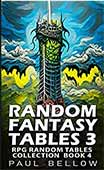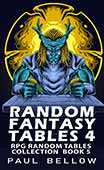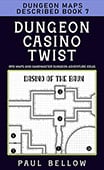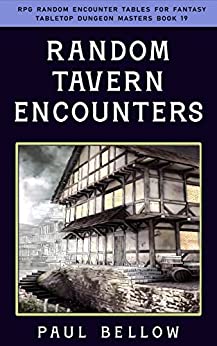If you’ve ever rolled dice beside flickering candlelight, breath held as a shadow crosses the dungeon wall, you know monsters are more than stats—they’re the pulse of Dungeons & Dragons. Every iconic creature in the Monster Manual holds the power to twist a story’s path, shatter assumptions, and carve unforgettable legends into a gaming group’s collective memory. This journey isn’t just an inventory of adversaries, but a tribute to the monsters that have stalked the dreams and nightmares of players for generations. Their claws, fangs, mind-bending tricks, and arcane machinations have seeped into D&D’s marrow, shaping its worlds and reshaping its heroes.
What gives these monsters such staying power? The answer is layered, like the strata of a lich’s lair or the shifting maze of a beholder’s tunnels. At the surface, it’s their unique mechanics—eye rays, mind blasts, shape-shifting trickery—that keep players guessing and strategizing anew. Beneath that lies the lore, storied histories and mythic origins that breathe life (or unlife) into their every encounter. Deeper still, these monsters echo primal fears and longings, tapping into the stuff of myth and legend, and etching themselves into pop culture. (Our D&D monster generator can really help…)
The creatures selected for this article have proven their mettle across decades of dice rolls and storytelling. Each has appeared consistently since the earliest editions, haunting modules, core books, and the dreams of adventurers with their unyielding presence. Their enduring appeal springs from the way they evoke strong, immediate reactions—panic, awe, a cold sweat of anticipation around the table. These monsters are much more than fodder for adventurers; they’re touchstones, anchors of shared experience for tabletop fans everywhere.
Monsters in D&D are never just random obstacles. They are world-building instruments, shaping the cultures and fears of civilizations great and small. They catalyze stories, changing the fate of cities, dungeons, and realms. Whether encountered in a furious battle or discovered lurking in centuries of legend, they’re the beating heart of every narrative twist, every hard-earned victory, and every tale retold after the dice have stopped tumbling.
Legendary Creatures of D&D
In the vast bestiary of Dungeons & Dragons, not all monsters are created equal. Some flicker into obscurity after a single edition; others become so deeply woven into the tapestry of the game that to remove them would be to unravel D&D itself. This article is devoted to those latter creatures—the ones that have become shorthand for danger, wonder, or outright weirdness at the game table. Each monster chosen is a touchstone, a legend, and a familiar adversary across almost every published campaign.
To capture the full complexity and appeal of these old favorites, each section will dig into a monster’s origin story, mechanical design, and evolution over decades of rules updates and creative reinterpretation. You’ll discover how their powers shape playstyles, how their personalities and mythologies fuel a Dungeon Master’s imagination, and why players still talk about that one time they tangled with a beholder, decades after the dice brought it all to a head.
Try my AI Tabletop RPG generators...and an extensive library of content!
While D&D teems with thousands of fantasy threats—from the obscure to the infamous—this exploration seeks out the most memorable: the ones you expect to find lurking in every legendary module, ready to challenge not just your party’s stats but their wits, morals, and storytelling flair. Prepare to delve deep into these touchstones of terror and wonder, and see why they endure no matter how editions may change.

Beholder
Few monsters inspire the same mix of awe and terror as the beholder—a floating orb of writhing eyestalks and a single, unblinking, tyrannical eye. Conceived in the earliest days of D&D, the beholder is one of the game’s most original creations, wholly unique and instantly recognizable. Its alien anatomy alone is enough to send a wave of unease through any adventuring party, but it’s the sheer unpredictability of its magical eye rays that make every encounter a breathless ordeal. One moment you’re strategizing over cover, the next you’re scrambling to distribute potions after a petrification beam sweeps through.
Gameplay with a beholder is chaos distilled. Each of those eyestalks casts a different debilitating or deadly effect, from disintegration to sleep. This forces players to constantly adapt, abandon rote tactics, and even question the wisdom of fighting at all. Beholders take control of combat’s flow, pushing parties out of their comfort zones while offering the DM an arsenal of tricks to challenge every class. The tactical puzzle posed by their lair—each designed by a paranoid, hyper-intelligent mind to maximize the beholder’s advantages—only adds to the sense of insurmountable odds.
The true terror of the beholder, however, is its psyche. Incredibly xenophobic, convinced of its perfection, and usually bristling with traps and minions, a beholder’s lair is less a habitat and more a statement of domination. This informs not just encounter design but the very fabric of the game world. The mere rumor of a beholder’s presence can shape towns, politics, and entire regions. Its paranoia leads to lairs packed with unique magical defenses and riddles, making any incursion a deadly gauntlet rather than a straightforward fight.
⚔️ Fantasy RPG Random Tables Books
Make life as a Gamemaster easier…
If you play Dungeons & Dragons, Pathfinder, or other fantasy RPGs, this
RPG random tables series
is packed with encounters, NPCs, treasure, and more. Available in eBook or print—either way, you’ll have a wealth of adventure ideas at your fingertips.
Beholder Adventure Hooks:
- A secretive cult worships a powerful elder orb, demanding sacrifices and spreading fear through the city.
- Rumors say a beholder’s minion has stolen a crucial artifact—retrieve it from their labyrinthine, trap-filled lair.
- A beholder is orchestrating a criminal network, manipulating thieves’ guilds with threats and magical compulsion.
- Adventurers stumble upon the remains of a failed beholder uprising, overseen by the twisted loyal spawn of their master.
- A rival beholder intends to conquer a sentient dungeon, turning its corridors into an eye-ray shooting gallery.
- The local wizard’s guild suspects a beholder is spying from afar with arcane scrying—find its hidden observatory.
- Villagers are mysteriously turning to stone; clues lead to an underground ruin ruled by a petrifying eye tyrant.
- A map falls into the party’s hands, detailing a beholder’s lair—but the map itself is a sentient trap.
- A beholder demands tribute, holding an entire town hostage through fear and magical blackmail.
- An enchanted mirror is actually a gateway to a beholder’s demiplane; those who gaze too long are never seen again.
- The party is hired to retrieve a rare herb from a swamp, only to discover the wetlands are patrolled by a beholder and its monstrous pets.
- A beholder has mutated, spawning bizarre hybrid ‘eye beasts’ that threaten ecosystems and balance.
As a campaign adversary, the beholder offers Dungeon Masters the rare opportunity to weave together challenging tactics with nuanced roleplay and worldbuilding. Every trap, servant, and architectural flourish in its lair has a story rooted in the creature’s paranoia and vast intelligence. Players must move beyond brute force, delving into social engineering and puzzle-solving to survive. In this way, the beholder becomes more than a monster: it is a centerpiece of an entire adventure or campaign arc, reshaping the very rhythms of gameplay.
Additionally, the lore of beholders is a treasure trove for DMs who crave the weird and the wondrous. Variants like death tyrants, hive mothers, and gauths allow for endless customization. Whether met as a cunning adversary, an uneasy ally, or the linchpin of a cosmic mystery, beholders offer a depth and replay value that few other monsters can match.
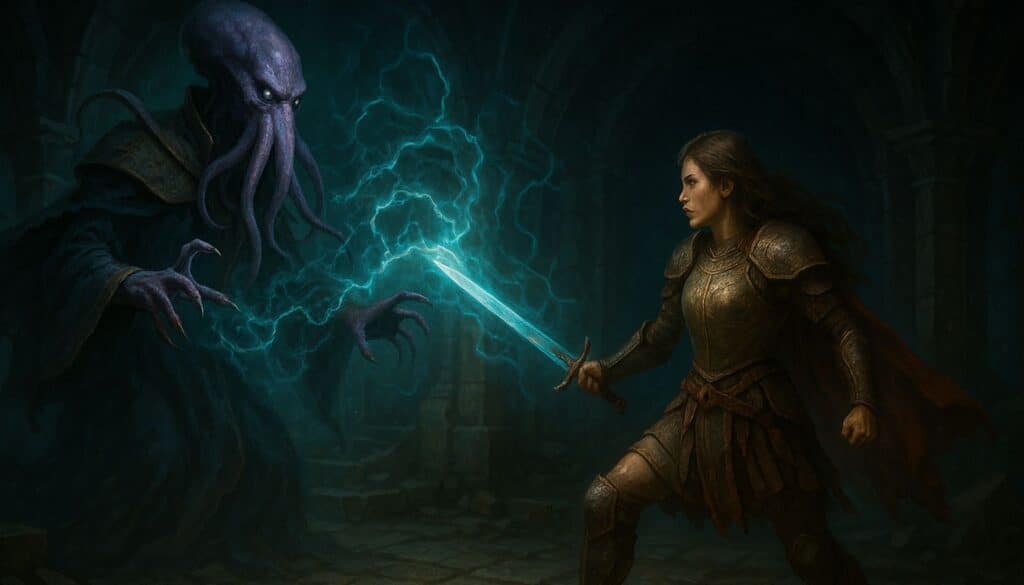
Mind Flayer (Illithid)
Haunting the dark corridors between worlds, mind flayers are the stuff of sanity-shredding nightmares. Their roots dig deep into Lovecraftian horror, all writhing tentacles, inhuman intelligence, and psychic power that erodes both will and reality itself. Mind flayers are more than just aberrations; they are cold, calculating slavers whose arrival in a campaign signals a profound escalation in both threat and narrative complexity. From the Underdark to the Astral Plane, tales of mind flayers send tremors through any community that values free will.
The mechanics of illithids are built around domination. With their signature “mind blast,” they can incapacitate entire parties, stripping away agency and setting the tone for encounters where players are prey, not predators. Their relationship with intellect devourers, small brain-like creatures that turn trusted allies into puppets, and their binding loyalty to the elder brain that rules their colonies, gives them a hive threat that can ripple through a campaign for months. Successfully resisting or infiltrating a mind flayer enclave tests every tool in a player’s kit—brute strength, magic, cunning, and, above all, paranoia.
Much of the illithid’s power comes not just from its own abilities, but from its role as a world-shaper. Planar crossings, ancient wars with the githyanki and githzerai, and sinister plots to seed the world with thralls make mind flayers perfect for grand, interconnected stories. Their hunger for brains is just the tip of an existential threat: the idea that freedom, reality, and even memory itself is malleable in their presence, and your party might not even know who they are serving at the end of the day.
Mind Flayer Story Ideas:
- A bustling city is slowly overtaken as key leaders fall under an unseen mind flayer’s thrall.
- A forbidden ancient tome details the location of an illithid hive—do you destroy or plunder it?
- The party must negotiate with githyanki mercenaries to thwart a planar mind flayer invasion.
- A beloved NPC starts losing memories, only to reveal an intellect devourer has taken root.
- The adventurers infiltrate the Underdark to rescue captives from an elder brain’s influence.
- Disturbing psychic visions reveal a centuries-old illithid plotting a return to the surface world.
- A wizard unearths a mind-controlling artifact, but it is the bait in a mind flayer’s greater scheme.
- An entire district’s population behaves robotically, cut off from their past, the result of illithid manipulation.
- The party is tasked with destroying an elder brain, risking a deadly counterattack from its minions.
- An ancient alliance with the githzerai is tested as mind flayer activity resurges in the region.
- A planar rift spills illithid forces onto the material plane, sowing terror in frontier towns.
- The only hope for breaking a mind flayer’s control is to explore a psychic dreamscape inhabited by tormented victims.
Mind flayers excel as antagonists who seed horror and philosophical quandaries in equal measure. Their psychic powers and cruel intelligence often force players into uncomfortable moral territory—choosing between sacrificing a few to save many, risking their own autonomy, or embracing dark bargains for information and survival. Nothing in their presence is simple, and victories are always tinged with the threat of corruption or loss.
As recurrent villains or cosmic threats, mind flayers challenge not just the party’s strength, but their sense of identity and trust in the world. The shadow of the elder brain is long, and the changes it leaves in its wake can transform entire campaigns, twisting expectations and reshaping worlds in the image of alien horror.
Lich
The lich looms in fantasy as the ultimate self-made monster: a wizard who has defied death through forbidden magic, shunning the limits of mortality for the cold certainty of undeath. Tracing its ancestry through pulp horror, European folklore, and early D&D modules, the lich is the archetype of both villainy and ambition gone awry. A lich’s story doesn’t end at the grave—if anything, eternity is where their legend truly begins.
Central to a lich’s enduring threat is the phylactery: an object in which they store their soul, rendering them functionally immortal so long as it remains hidden or intact. This single mechanic transforms a simple boss battle into a campaign-long quest, riddled with investigation, subterfuge, and uneasy alliances. A lich can be “destroyed” time and again, only to return, more vengeful and cunning than before, its phylactery still secret and ticking like a necromantic time bomb far from the battlefield.
Their connection to necromancy and the arcane injects true terror into any campaign, but also layers them with tragic or philosophical weight. What drives an individual to shun life and humanity? Is it a thirst for forbidden knowledge, a need for power, or a desperate pact with darker forces? Each lich can be uniquely tailored: a tormented former hero, a cackling tyrant, or a coldly logical scientist of the soul. Their lairs, bristling with undead, riddles, and deathtraps, are both a DM’s playground and a party’s recurring nightmare.
⚔️ Fantasy RPG Random Tables Books
Make life as a Gamemaster easier…
If you play Dungeons & Dragons, Pathfinder, or other fantasy RPGs, this
RPG random tables series
is packed with encounters, NPCs, treasure, and more. Available in eBook or print—either way, you’ll have a wealth of adventure ideas at your fingertips.
Mechanically, liches embody magical supremacy. They bring to bear the full arsenal of high-level spellcasting, monstrous lairs warped by their will, and loyal undead servants. Yet combat with a lich is almost always a test of strategy and ingenuity, not just brute force. Every encounter can echo the lich’s personality—chillingly precise, frenzied with fury, or eerily still as the grave. Their long view of time allows them to plot, manipulate, and terrorize on a scale few other villains can match.
Lich Campaign Threads:
- Discovering that a trusted ally or mentor is slowly undergoing the transformation into a lich.
- Hunting down the scattered pieces of a lich’s shattered phylactery across the planes.
- Gaining the favor of a lich in exchange for forbidden knowledge, at great personal cost.
- Investigating a town plagued by undead, only to learn a forgotten ruler returned as a lich commands them.
- Decrypting the prophecy in an ancient tome, revealing a lich’s next resurrection cycle.
- A lich bartering for its phylactery’s location in exchange for helping to defeat a greater evil.
- A lich’s lair is mobile—perhaps a floating fortress or walking tower—and must be invaded mid-journey.
- The realization that a renowned magical academy secretly shields a council of liches.
- Undertaking a harrowing journey into the Shadowfell to destroy a lich’s soul vessel.
- Being forced to negotiate with a lich that guards an artifact essential for saving the world.
- Sabotaging the ritual of a would-be lich and dealing with the arcane fallout.
- The party is manipulated into destroying a rival lich, only to find they played into an older, deeper scheme.
- A lich’s phylactery is a living creature, forcing moral choices on how to end the threat.
- Unlocking the powers of a lich’s tomb, only to become entangled in the web of their ancient enemies.
Liches are indispensable for GMs seeking long-term, complex villains who return from apparent defeat, each time more prepared and vengeful. They shine brightest in campaigns layered with intrigue, secret histories, and moral dilemmas. The very act of searching for a phylactery becomes almost mythic, a test of resolve, intelligence, and courage that ropes in the entire adventuring party for sessions on end.
Equally, liches are high-octane spellcasters. They test every strategy and spell in a player’s arsenal, rewarding ingenuity and teamwork. Yet the greatest threat a lich offers is not magical annihilation, but the promise of a battle that spans lifetimes, cities, and even planes, forever entwined in the fabric of your campaign’s legend.
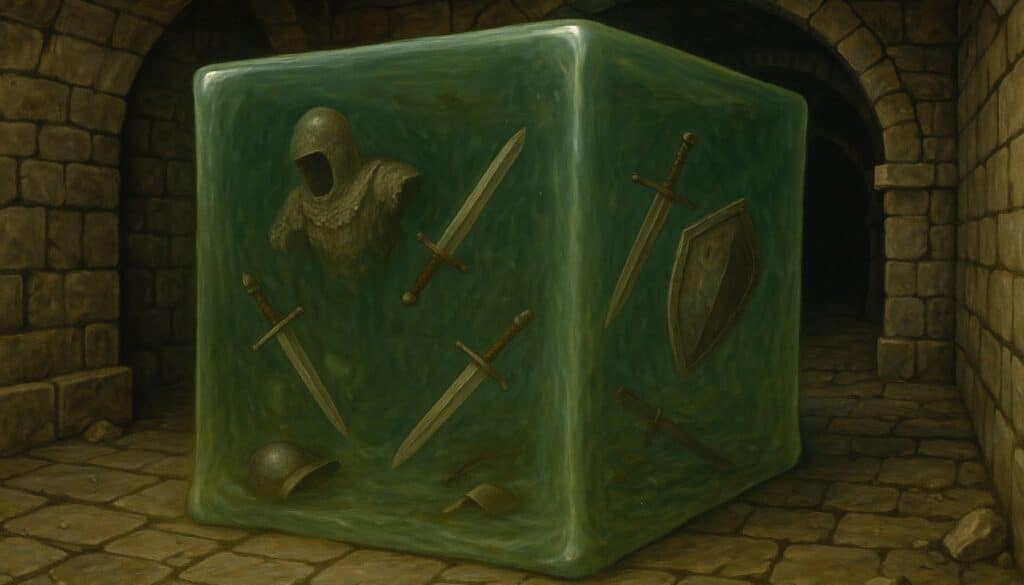
Gelatinous Cube
The gelatinous cube proves that, in D&D, even the simplest ideas can become iconic. It is a literal block of transparent, quivering ooze, gliding silently through dungeon corridors, devouring all that lies in its path. Appearing in nearly every edition, the gelatinous cube fills a unique ecological niche; it’s the perfect dungeon janitor, dissolving debris and the occasional unlucky adventurer. Its very absurdity—how can something so goofy be so deadly?—ensures it is the source of as much laughter as it is of fear.
Silent and nearly invisible against dungeon walls, the gelatinous cube is a trap that rewards the cautious and punishes the reckless. Its paralyzing touch and corrosive acids are devastating to low- or mid-level parties, providing a reminder that not all threats come with fangs or battle cries. The cube is equal parts environmental hazard and monster, capable of swallowing spellbooks, magic items, or beloved familiars before anyone realizes it’s there. It turns mundane dungeon exploration into a constant game of keep-your-head-on-a-swivel.
What gives the gelatinous cube such longevity is the blend of comedy and terror it inspires. Players might chuckle at its appearance or name, but the first time someone loses a prized sword—or outright dies to the cube’s digestion—respect is assured. DM’s love using the cube as an unexpected twist, upending a party’s sense of safety and challenging their spatial awareness and puzzle-solving skills.
Gelatinous Cube Dungeon Rooms or Puzzles:
- A mirrored hallway makes spotting the transparent cube nearly impossible until it’s almost too late.
- A switch puzzle requires leading a cube into dissolving old barricades blocking new passages.
- The cube prowls a collapsed library, and retrieving a specific tome means timing your moves between its patrols.
- Treasure or clues lie encased in partially dissolved objects only accessible from within the cube’s body.
- Sliding floors or chutes can drop PCs directly into a cube’s waiting embrace.
- A goblin tribe uses a cube as a mobile waste disposal—crossing their lair means dodging both traps and ooze.
- The cube serves as the “key” to opening a vault, dissolving magical wards when fed specific items.
- Multiple cubes snake through a maze, forcing parties to navigate or manipulate their predictable paths.
- A pit filled with cubes serves as a deadly barrier to a villain’s hideout.
- The party must escort a fragile NPC through cube-infested halls, balancing speed and stealth.
- The cubes secrete rare alchemical reagents, but collecting them risks instant digestion.
- A floating, enchanted cube presents aerial dangers in a vertical shaft or spire.
The gelatinous cube endures because it is, at its heart, quintessentially D&D—a monster that should be silly but remains deadly, surprising players who let their guard down. Its simple mechanics allow it to be slotted into almost any dungeon without warning, keeping even veteran adventurers on edge.
Straightforward in design yet endlessly adaptable in application, the cube’s reputation survives because its very presence tells players, “You’re not in a safe dungeon anymore.” In a game built on invention and surprise, the gelatinous cube is a low-tech scare that never goes out of style.
Try my AI Tabletop RPG generators...and an extensive library of content!
Owlbear
The owlbear is the perfect embodiment of early D&D’s anything-goes creativity—a wild-eyed blend of bear strength and owl ferocity. Its origins spring from the earliest D&D miniatures, literally cobbled together from random plastic toys. This hybrid beast has since become an enduring symbol of the fantastical wilderness, its unpredictable aggression a staple of countless random encounter tables. Whether roaring from the underbrush or silently watching from the treeline, the owlbear commands both respect and wariness.
At the game table, the owlbear is the classic brute. Its swiftness and anger can surprise overconfident parties, turning a leisurely forest stroll into a desperate melee in moments. Yet unlike more exotic monsters, the owlbear fits seamlessly into the ecology of a fantasy world. It’s not evil, just territorial, making it equally effective as a dangerous wildlife encounter or the misunderstood victim of expansionist settlers or poachers.
Its hybrid nature allows Dungeon Masters to use the owlbear in imaginative and flexible ways. While a lumbering threat in combat, owlbears are just as effective for world-building. Perhaps their mating calls inspire local legends, or their feathers are coveted by wizards for spell components. Their cubs are both adorable and potentially catastrophic—encountering one might lead to a rescue mission, an adoption, or a desperate escape as the enraged parent appears.
Owlbear Wilderness Uses:
- A mother owlbear defends her cubs nestled near a trading route, leading to trade disruptions and local panic.
- Herdsmen hire adventurers to drive off an owlbear that preys on livestock.
- Barbarian tribes use owlbears as battle mounts, forging powerful bonds through intimidation and respect.
- An eccentric druid seeks help protecting an endangered owlbear habitat from encroachment.
- The party seeks a rare owlbear feather for a powerful spell or artifact.
- An owlbear, wounded by hunters, is lashing out indiscriminately in the forest.
- Rumors swirl of an albino owlbear regarded as a forest spirit or omen.
- The party discovers a cave mural depicting ancient rituals involving owlbear guardians.
- A poacher’s trap kills an owlbear, risking war with local fey or druidic orders.
- A wizard’s experiment creates miniature owlbears that escape into rural farmlands.
- The party befriends a lost owlbear cub, raising hard questions about release or domestication.
- An ancient ruin is watched over by an owlbear, driven by instinct to protect the area’s secrets.
Owlbears inject campaigns with a visceral, natural wildness. They remind players that the world is alive and sometimes hostile, full of creatures who want nothing more than to survive. Unlike world-ending threats, their presence is a nudge toward empathy, problem-solving, and seeing the world as more than a battlefield.
Still, they’re never to be underestimated. An enraged owlbear can maul even seasoned adventurers in a flurry of claws and beak. In this way, their blend of familiarity and fierceness makes them a perfect go-to for keeping players on their toes without resorting to otherworldly horrors.
Tarrasque
The tarrasque is D&D’s answer to the primal fear of nature’s wrath made flesh—a walking apocalypse awakened only in the darkest legends and the direst of omens. Towering taller than castles, its armored hide resists even the most legendary weapons, while its regenerative powers mock the efforts of would-be heroes. Since its debut in early editions, the tarrasque has served as the literal and figurative high-water mark of destructive potential for a campaign, a living endgame scenario that has haunted player imaginings for decades.
Mechanically, the tarrasque is without peer. Its legendary resistances, immunity to almost all forms of attack, and earth-shattering physical presence mean that facing down this beast is less a battle and more an epic event. Few monsters inspire such immediate, unanimous terror (and curiosity): Can it be stopped? Should it be? The tarrasque’s very existence shifts the campaign’s tone from adventuring to pure survival. Its statistics were designed to make even gods nervous, compelling parties to think far beyond fireballs and swords.
Yet the tarrasque is more than a pile of hit points. Its mythic status as the ultimate challenge has fueled countless campaign myths and legends. The mere rumor of its stirring is enough to send kingdoms scrambling, alliances forming and breaking, and entire continents realigning. It is the monster DMs hold in reserve until the time for subtlety is gone, and only spectacle remains.
For all its power, the tarrasque comes with a built-in narrative: the catastrophic wake of its passage, the stories of failed heroes and desperate survivors, and the existential question—why does it even exist? Is it a natural force, a god’s punishment, the world’s immune system purging a blight, or something stranger? Its appearances, rare and deadly, create campaign moments that none will ever forget.
Tarrasque Scenarios:
- Legends speak of the tarrasque awakening every thousand years; the stars are now aligned in dread anticipation.
- A city is destroyed overnight—survivors report only a shaking earth and a distant, inhuman roar.
- Heroes must race to gather ancient artifacts, believed to be the only tools capable of containing the beast.
- Prophets see visions of the tarrasque walking through a burning world—can fate be changed?
- The party is hired to sabotage a wizard’s attempt to awaken the tarrasque as a doomsday weapon.
- Scraps of forbidden lore suggest the tarrasque can be communicated with—at what cost?
- A region is plagued by earthquakes and strange animal migrations, hinting at the beast’s subterranean approach.
- The tarrasque appears in collective dreams, and chosen ones awaken with knowledge of its path.
- A cult venerates the tarrasque as a divine harbinger, working to speed its arrival.
- Another tarrasque, smaller yet deadly, appears—has something fundamentally changed in the world?
- The only hope for survival lies in awakening another primordial monster to combat the tarrasque.
- The party discovers the fossilized remains of a tarrasque, but something within begins to twitch.
Tarrasque encounters are a lesson in narrative scale. They underscore the fact that not every monster is meant to be slain—sometimes survival, evasion, or creative containment are the only real victories. Using the tarrasque too often robs it of its thunder, but deployed judiciously, it can define the high stakes and drama of an entire campaign arc.
Ultimately, the tarrasque’s legend endures because it embodies a central truth of fantasy: some forces are bigger than the heroes, and not every story ends with the villain’s defeat. Its rarity is precisely what secures its mythic resonance, ensuring that, in the minds of players, the name “tarrasque” will always conjure awe and a healthy dose of dread.
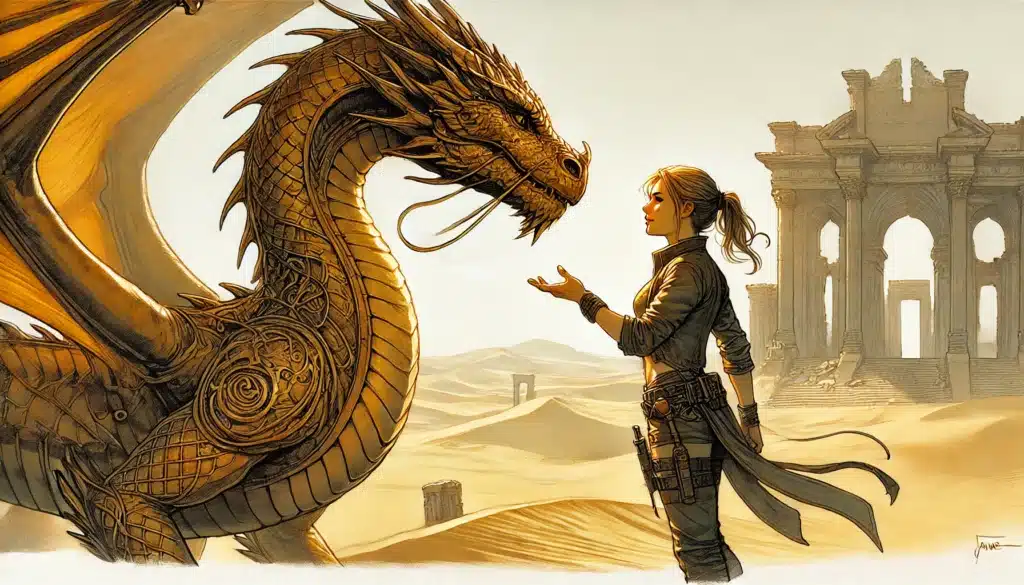
Dragon
Dragons are the heart and soul of Dungeons & Dragons, the mythic creatures from which the game draws its very name. These monumental beasts dwell at the intersection of legend and reality, serving as both apex predators and wise, ancient arbiters. Over countless campaigns, dragons have been more than just adversaries—they are sometimes mentors, enemies, objects of worship, or even uneasy allies. Their intelligence, magical might, and labyrinthine hoards make every encounter a potential epic in the making.
One of the game’s most brilliant design moves was dividing dragons into chromatic and metallic types: evil reds, blues, blacks, and greens hoarding treasure and delighting in mayhem, contrasted with the noble golds, silvers, and coppers who often serve as guardians, rulers, or secret benefactors. This dichotomy allows DMs to tailor dragons not just as obstacles, but as complex characters with goals, relationships, and philosophies. The shape of every dragon’s personality and lair becomes integral to campaign flavor.
Breath weapons are the stuff of legend—fiery gouts, freezing storms, and waves of acid or lightning that can turn a battle in an instant. Yet just as critical as their raw power is the weight of their knowledge, their ancient schemes, and their ability to shake the foundations of entire kingdoms with a single command. Hoards are more than piles of gold—every gem, every artifact, is a story waiting to be uncovered.
Dragons are also the ultimate “big boss” and the ultimate plot twist—they can be cornerstones of world history, masterminds behind global conspiracies, or the source of ancient prophecies. Their presence raises the stakes in any campaign, both for their sheer challenge and their narrative potential. Interacting with a dragon, whether sword-drawn or cup-in-hand, is always an event.
⚔️ Fantasy RPG Random Tables Books
Make life as a Gamemaster easier…
If you play Dungeons & Dragons, Pathfinder, or other fantasy RPGs, this
RPG random tables series
is packed with encounters, NPCs, treasure, and more. Available in eBook or print—either way, you’ll have a wealth of adventure ideas at your fingertips.
Types of Dragons in D&D
| Dragon Type | Alignment | Terrain Preference | Unique Encounter Idea |
|---|---|---|---|
| Red | Chaotic Evil | Volcanic mountains | A dragon uses volcanic eruptions as cover for raids |
| Blue | Lawful Evil | Arid deserts | The party must cross a sandstorm to treat with a blue dragon |
| Green | Lawful Evil | Ancient forests | Dragon manipulates local politics via puppet rulers |
| Black | Chaotic Evil | Swamps & ruins | Swamp’s acid pools hide the true prize in its lair |
| White | Chaotic Evil | Frozen tundra | A white dragon preserves victims in icy tombs |
| Gold | Lawful Good | Coastal caves/mountains | Dragon tests party with riddles for its aid |
| Silver | Lawful Good | Mountain peaks | A silver dragon mediates a dispute posing as a human |
| Bronze | Lawful Good | Rocky coasts | Dragon requires proof of heroism before helping |
| Copper | Chaotic Good | Arid hills/canyons | Copper dragon challenges party to a contest of wit |
| Brass | Chaotic Good | Deserts, badlands | Brass dragon trades secrets for stories around a campfire |
Dragons distill everything that makes D&D legendary: unmatched power, mythic lore, and personalities as varied as any NPC. They are as effective in stories about war and conquest as they are in tales of lost love or cosmic bargains. No other monster adapts so easily to every campaign style—from intrigue and diplomacy to all-out war.
Ultimately, dragons endure because they are the perfect adversaries, allies, and world-shapers. They reward clever negotiation as much as raw courage, and for many players, slaying (or outwitting) a dragon isn’t just a victory; it’s a rite of passage, a mark that a character has truly entered the halls of legend.

Mimic
No monster captures the paranoia of a classic dungeon crawl like the mimic. First appearing as an “animated treasure chest,” the mimic has since infiltrated every facet of fantasy architecture—doors, bookshelves, thrones, even weapons and walls. Its primary draw is its ability to subvert player expectations, making every object in the dungeon a potential threat. At the table, mimics are the leap-scare behind every “I search for traps” and the punchline to stories retold for years.
Mechanically, the mimic is an ambush predator par excellence. Its adhesive body holds prey fast, its corrosive saliva eats through armor and gear, and its amorphous form lets it blend into the background until the moment of attack. But mimics can do more than just grab and bite: clever DMs use them as part of puzzles, obstacles, and even social encounters by suggesting creatures that may be able to reason—or bargain—if the circumstances are right.
As D&D has evolved, so too have mimics. Some speak, others wield limited magic, and legendary mimics can even take the form of entire buildings. Exploring the motivations and psychology of these bizarre creatures has elevated them from a simple “gotcha” monster into a versatile story tool, injecting surprise and laughter into sessions where routine exploration has lulled players into complacency.
Creative Mimic Disguises:
- Ornate treasure chests, the classic trap for greedy adventurers.
- Doors or trapdoors, devouring those who try to flee in panic.
- Altars or religious idols, punishing overconfident zealotry.
- Throne room chairs, attacking rulers or the curious.
- Swords or magical weapons, turning on those who try to wield them.
- Bookcases filled with forbidden tomes that bite back.
- Market stalls or carts on city streets, sowing chaos in urban campaigns.
- Wells or fountains, preying on the thirsty and unsuspecting.
- Armor stands, ensnaring those seeking equipment or aid.
- Full-length mirrors concealing passageways—or a hungry maw.
- Beds in an inn, springing on weary adventurers at their weakest.
- NPCs in disguise, shattering trust and upending social encounters.
Mimics inject a unique combination of tension and comic relief. Players grow wary of every mundane object, and yet, the laughter that follows a surprise mimic attack becomes a cherished part of the campaign’s tapestry. Their randomness keeps players sharp, ensuring boredom never gets a foothold in the dungeon.
Over time, mimics have evolved into a symbol of both D&D’s unpredictability and its wicked sense of humor. The next time you describe a treasure chest, watch your players’ eyes narrow with suspicion. No monster does more with less—and no campaign is quite complete without at least one encounter that makes everyone ask, “Are you sure it’s not a mimic?”
Displacer Beast
With six legs, jet-black fur, and a pair of writhing tentacles sprouting from its shoulders, the displacer beast is a quintessential example of D&D’s uncanny, interdimensional invention. Inspired by classic science fiction and fantasy, these predatory “cats” are known not just for their physical prowess but for their illusion-warping ability to always appear a few feet from their true location. Facing a displacer beast is as much about outsmarting as outmuscling it, making every encounter a test of teamwork and perception.
Mechanically, the displacer beast is a mid-level foe that packs a punch. Its displacement field, rendering attacks likely to miss, forces parties to adapt—switching up tactics, relying on area effects, and sometimes falling back to regroup. Its ambush style often places it at the heart of tense, cat-and-mouse chases. The beast may stalk the party over several days, striking at the moment of weakness and then fading back into the forest or Feywild mists.
Visually, displacer beasts are both elegant and monstrous, straddling the boundary between familiar predator and otherworldly terror. Their legacy has only grown as D&D lore has expanded, associating them with the Feywild, strange magical experiments, or the mysterious courts of faerie. Whether solitary hunters or packs coordinated by monstrous intellect, displacer beasts bring visual flair and tactical challenge wherever they lurk.
Displacer Beast Encounter Setups:
- Stalking a displacer beast through a moonlit Feywild glade, where distance and perception distort.
- Hunting a legendary displacer beast whose pelt is the key to lifting a family curse.
- Fending off a pack of beasts that guard the ruins of an ancient wizard’s tower.
- Attempting to rescue missing villagers believed to be prey for a beast’s cubs.
- Tracking a domesticated displacer beast that has escaped from a warlord’s menagerie.
- A noble offers a hefty reward for a beast’s tentacle, but the creature’s kin seek vengeance.
- Navigating a mysterious forest where the beasts serve as magical sentinels or guardians.
- The party’s horses are picked off one by one, leaving a trail of subtle claw marks.
- Surviving a midnight assault in their camp, fending off both real and illusory attackers.
- A wounded displacer beast seeks revenge, tracking the party with unearthly patience.
- Packs of displacer beasts used as “bloodhounds” by drow slavers in the Underdark.
For mid-level campaigns, displacer beasts are a spectacular fit. Their signature ability reshapes how parties plan, incorporating new tools and strategies. Their alien elegance and lethal cunning can drive entire plotlines, whether as the hunters or the hunted.
More than just another beast, the displacer beast’s fusion of fantasy and sci-fi roots, paired with its unique mechanics, makes it an enduring favorite—a test that rewards clever play and tactical flexibility with some of the game’s most memorable skirmishes.
Demogorgon
Demogorgon looms as the Prince of Demons, and no single monster better encapsulates D&D’s grandest vision of chaos, evil, and power. Sporting two baboon-like heads that bicker and plot against each other, a writhing mass of tentacles, and a reptilian frame towering over even pit fiends, Demogorgon has haunted the Abyss and the imagination of DMs since the earliest Monster Manuals. This demon lord is not merely a foe but an existential threat, a force of madness and disorder that defies mortal understanding.
Lore-wise, Demogorgon’s influence has shaped entire editions. His twin heads, Aameul and Hethradiah, scheme in constant opposition, their internal war fueling endless plots and power struggles throughout the lower planes and beyond. His lair in the Gaping Maw is a place where reality itself frays; even the landscape is subject to his monstrous will. Over time, Demogorgon has become the gold standard for high-level demonic threats, inspiring cults, apocalyptic prophecies, and the eternal struggle for supremacy in the Abyss.
Thematically, battles with Demogorgon are never just about raw power—though he has plenty of that—but about the warping of sanity, the perversion of nature, and the fracturing of alliances and minds. His mere presence turns structure into anarchy, and his cult’s insidious influence can spread like a blight through kingdoms, tempting mortals to madness in exchange for infernal power. The stakes escalate from survival to the integrity of the universe itself.
Try my AI Tabletop RPG generators...and an extensive library of content!
Bringing Demogorgon into a campaign signals a shift into epic, world-spanning storytelling. His schemes ripple outward, affecting devils, gods, and planar barriers. Players must grapple not only with impossible power but with the moral and existential threats that come with facing the abyss incarnate. Success against Demogorgon is never clean—it always leaves scars, both real and metaphorical.
Demogorgon High-Level Campaign Arcs:
- A fanatical cult dedicated to Demogorgon overthrows a mortal kingdom, plunging it into anarchic nightmares.
- Demogorgon’s heads send conflicting orders to followers, fracturing his cult into warring factions.
- The Abyss itself spills into the material plane, with Demogorgon’s madness twisting the very landscape.
- The party must prevent a ritual summoning that would bring even a fragment of Demogorgon to their world.
- Rival demon lords attempt to usurp Demogorgon, using mortal pawns as unwilling warriors in their cosmic chess game.
- PCs are plagued by hallucinations and visions, slowly realizing they are being manipulated by Demogorgon’s distant gaze.
- A powerful artifact, rumored to bind or banish Demogorgon, turns out to be a double-edged trap.
- The party’s NPC allies are revealed to be secretly serving one of Demogorgon’s split personalities.
- The Demon Prince’s influence seeps into water supplies, creating monstrous mutations and chaos.
- A god appeals to the party for help in a battle for the soul of the multiverse against Demogorgon’s incursion.
- The party is forced to ally with other demon lords to cage Demogorgon’s rampage.
- Entire cities vanish into the Abyss, becoming nightmarish playgrounds for Demogorgon’s phantasmagoric celebrations.
Demogorgon stands as the pinnacle of high-level campaign threats. He is ever-changing, unpredictable, and insidious—no two encounters are ever the same, and defeating him requires more than just swords and spells. His cults, machinations, and mutations make him a threat that can ripple through entire settings, reshaping the game world in his chaotic image.
His power endures precisely because he represents the darkness at the edge of imagination—a foe so vast and chimerical that every campaign with his touch feels truly epic. To defeat, or even survive, Demogorgon is to stand at the edge of madness and refuse its embrace, forging stories that echo for a lifetime.

Final Thoughts on Classic Monsters
These monsters are more than just lines in a stat block; they are the lifeblood of Dungeons & Dragons, shaping campaigns into stories players never forget. Each one represents a lesson in design brilliance—a balance of risk, reward, and memorable challenge. Whether narrowly escaping a gelatinous cube’s silent advance, bartering with a silver dragon, or unraveling the schemes of an immortal lich, the presence of these icons infuses an unmistakable sense of wonder and dread into every adventure.
At every game table, legendary monsters transform anonymous dungeons and forests into living, breathing worlds. They are the secret architects behind cities, the shadowy hands moving pawns in kingdoms, and the lurking terrors that give PCs a reason to plan, worry, and celebrate each small victory. The reactions they inspire—laughter, screams, or stunned silence—are proof that D&D’s best monsters aren’t just obstacles, but the stuff of shared memory and legend.
What keeps these terrors alive across so many editions is their ability to ignite imagination. Design, lore, and challenge blend into something more: the creation of a mythos, a sense of history that connects new players to the veterans who rolled dice decades before. Using these creatures well means understanding both their roots and their potential, honoring tradition while embracing new twists and reinterpretations for each campaign.
⚔️ Fantasy RPG Random Tables Books
Make life as a Gamemaster easier…
If you play Dungeons & Dragons, Pathfinder, or other fantasy RPGs, this
RPG random tables series
is packed with encounters, NPCs, treasure, and more. Available in eBook or print—either way, you’ll have a wealth of adventure ideas at your fingertips.
For Dungeon Masters, these monsters offer a springboard into world-building and improvisation. They stretch not just the party’s abilities, but the creativity of everyone at the table. Every adaptation, every unexpected alliance, every twist of fate involving them adds another layer to your campaign’s tapestry, striking that elusive balance between the familiar and the fantastic.
Ultimately, monsters like these remind us of the real reason we play: not just to win, but to experience awe, terror, and triumph. Great monsters are stories made manifest—alive with possibility, challenge, and the promise of memories that will echo long after the dice come to rest. So the next time you introduce a classic D&D monster, do it with pride—knowing you’re adding a new chapter to the greatest story ever played.





